Below are some pictures of a 1989 ford crown victoria station wagon. At
the time these pictures were taken, this crownvic was around 20 years
old.
Here's the Front Steering Linkage
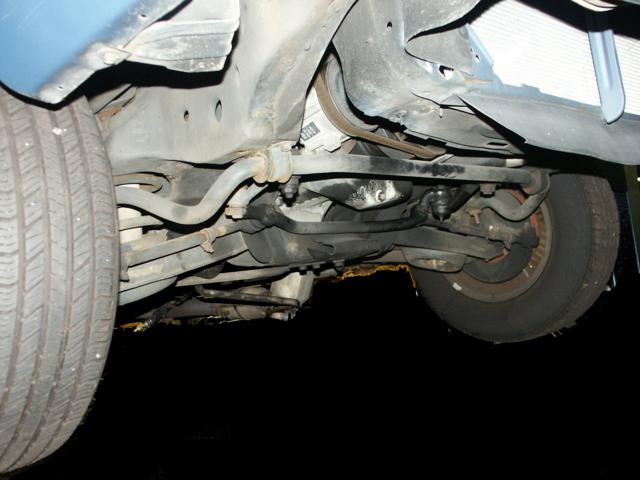
The idler arm and the front engine oil drain plug.
Also visible in the picture is the bottom of the catalytic converter
smog air pump. This located where the air conditioner compressor would
be in the 1992+ crownvics.
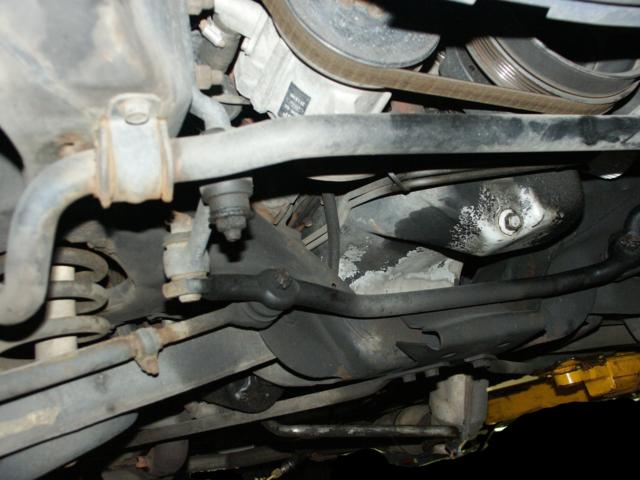
The idler arm from a different angle
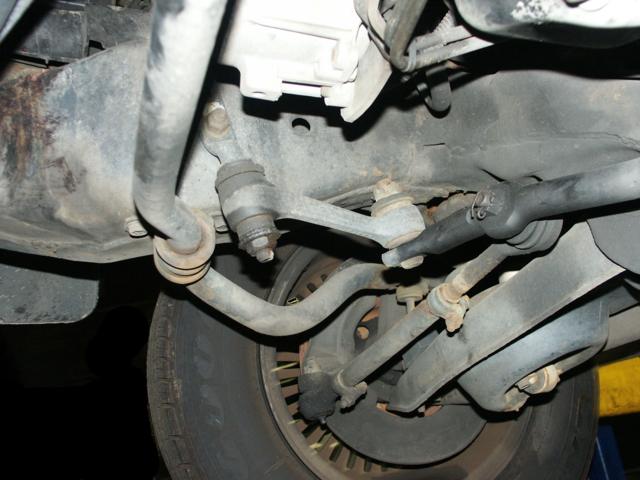
Here's a closeup of the steering box mounting bolts and also the front
swaybar bolt. Unlike the later cars, the front swaybar bracket bolts
thread directly into the frame. No fancy clip nuts, studs & nuts
like you'll find in the later cars.
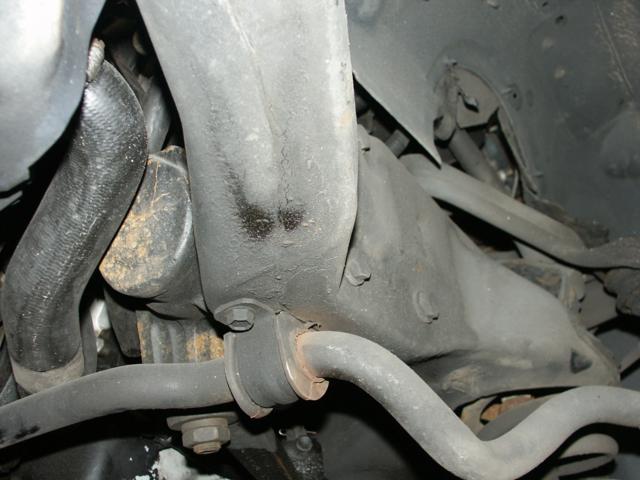
Here's the old style 1979-1994 pitman arm. The 1995-2002 cars use a
different pitman arm and centerlink.

Here's a closeup of the smog air pump that the pre-1992 cars used. This
pumps air into the catalytic converters to reduce emissions. Most
1980's american cars had one of these.
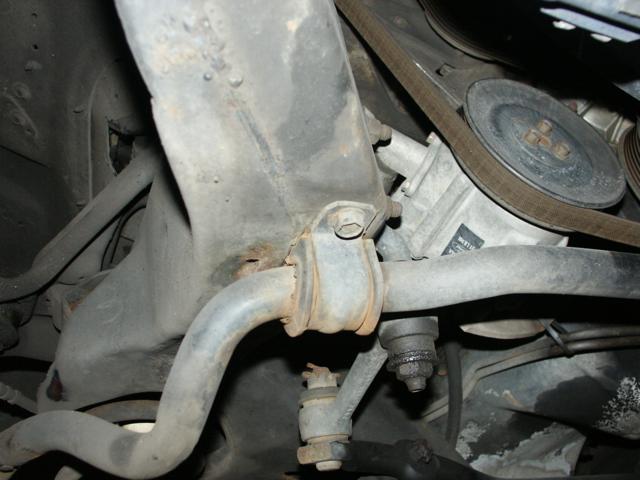
A closeup of the holes in the passenger front frame rail that you can
access the idler arm stud heads through
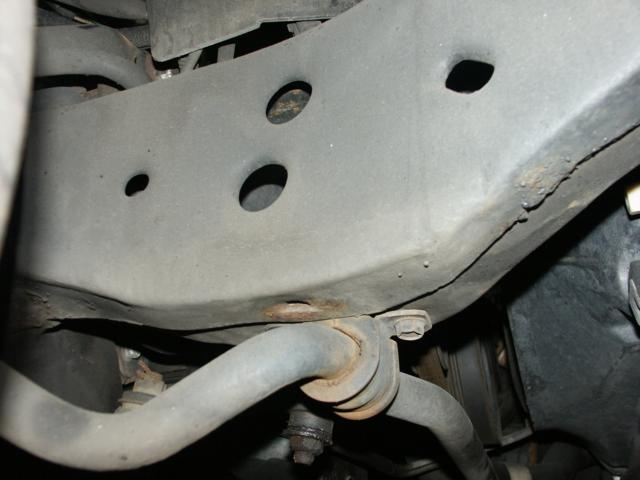
Here's a closeup of the passenger side front suspension. The 1979-1991
crownvics had a swaybar with links that mount directly to the lower
control arm. In the 1992+ cars, the links mount to the spindle instead
for reduced body roll. On crown victoria discussion boards, you'll
periodically find someone insisting that they want to downgrade their
1992-2002 car to this setup because they found a good deal on an old
style swaybar with some aftermarket polyurethane end links. This is a
misguided project that will likely increase front body roll, but some
people are really stubborn and don't listen.
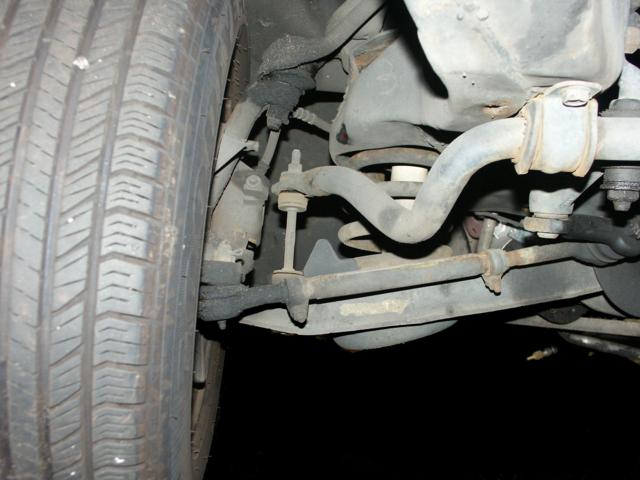
Also in the picture is the tierod adjuster sleeve. The 1979-1994 cars
use a sleeve that is close to an inch shorter the the 1995-2002 cars.
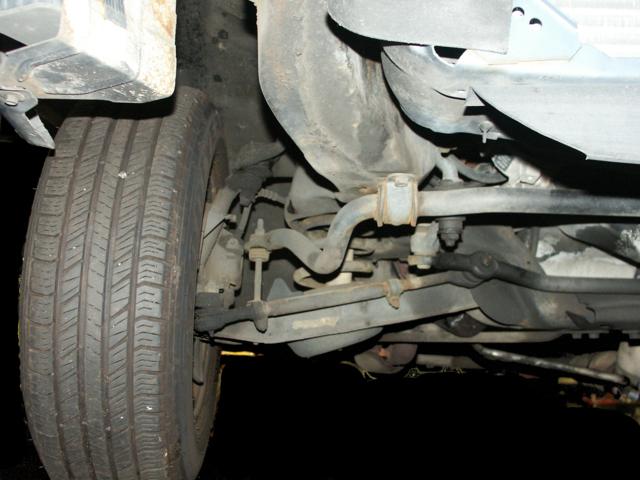
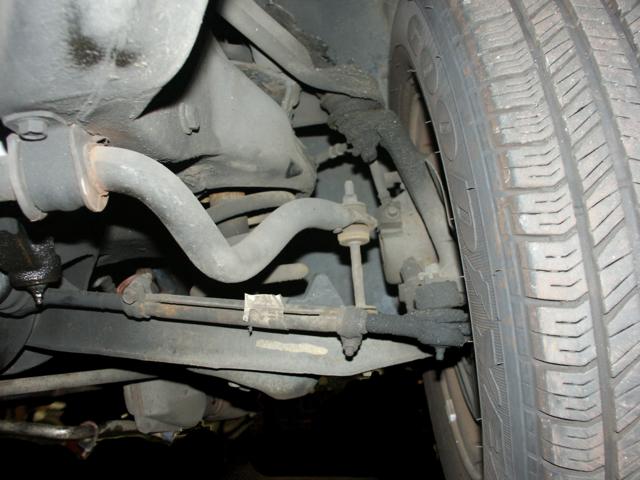
Here's a picture of the oil pan from underneath. This is a somewhat
oddball oilpan in the sense that it has two drain plugs, one towards
the front of the car and one towards the rear of the car. Many oil
change shops just remove one plug during the oil changes. But with the
curvature of the pan over the #2 frame crossmember, you'll need to
remove both drain plugs to get all the oil out.
And yes, the transmission is missing from this car.
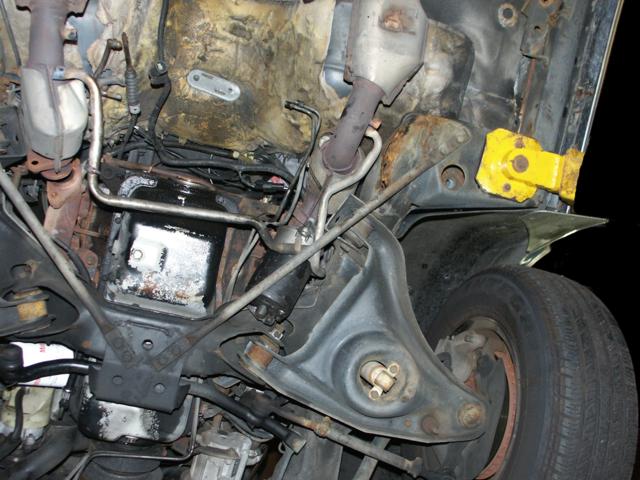
If you look closely at this picture, you can see a couple rust holes in
the frame that aren't supposed to be there. Rot holes in the frame
torque boxes have even been reported on 20+ year old southern crownvics
where chloride road salts aren't used too.
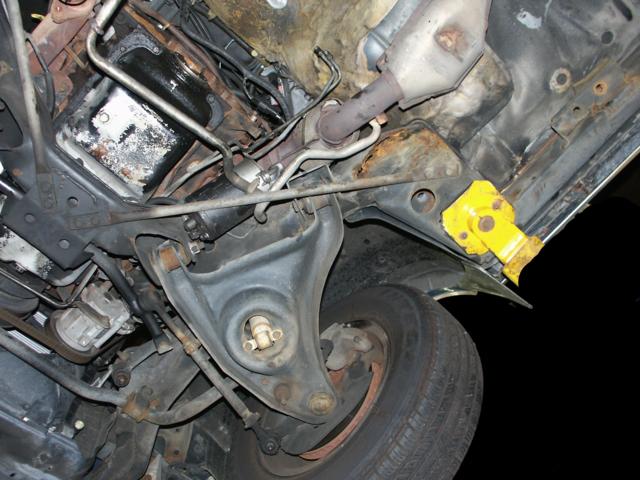
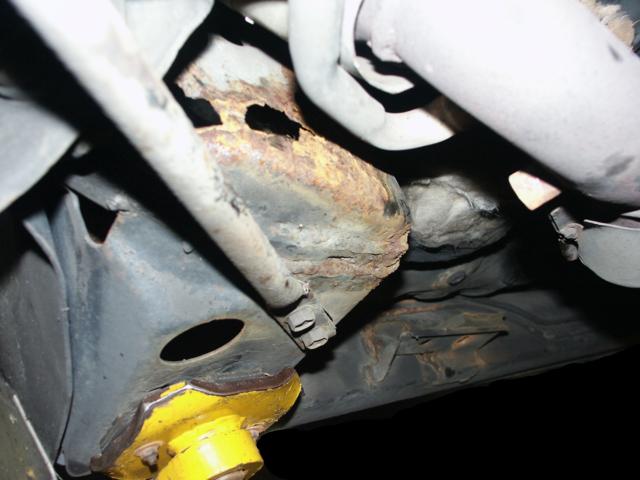
Here's the floorpan. This is the old style floorpan with the different
seat mounting system that was used in the pre-1990 cars.
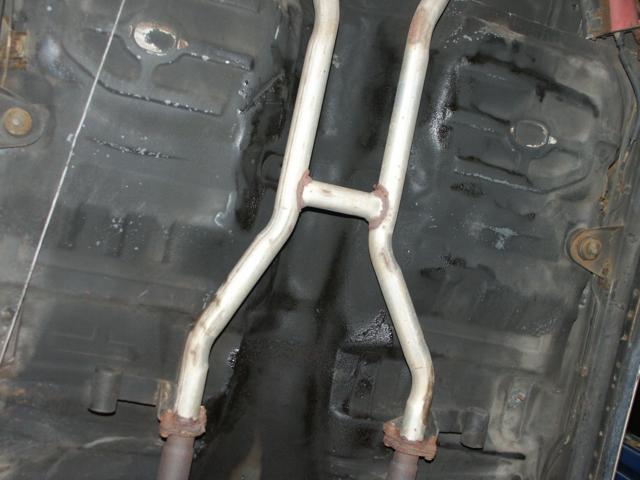
Here are the crash brackets for the two front seatbelts. In the 1990+
cars, the seatbelts mount to the seat frame which is then bolted to the
floorpan.
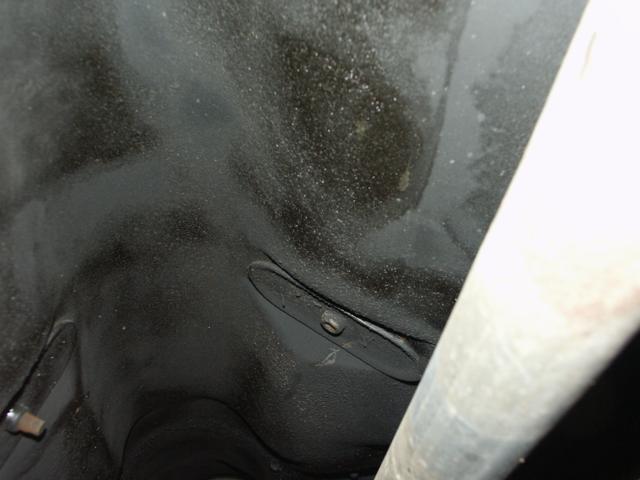
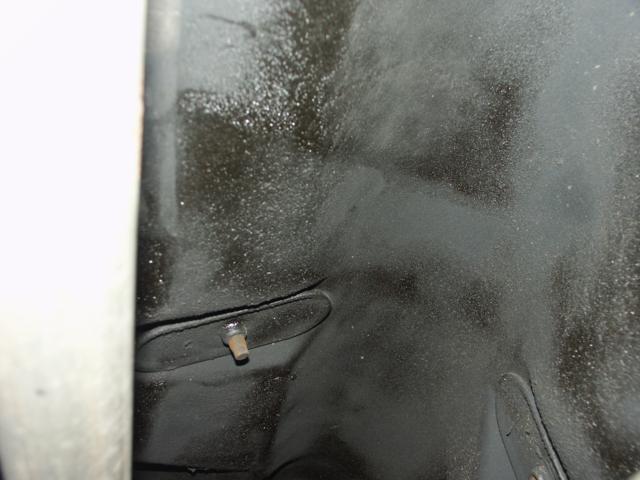
A closeup of the two front seat mounting brackets
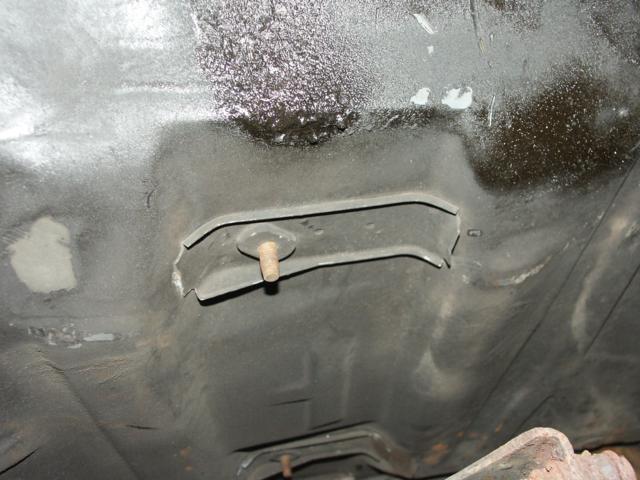
Here's the trunk floorpan. Actually this is a station wagon, so this
would probably be considered the rear luggage compartment floor. But
station wagons & sedans both used essentially the same floorpan.
However, there are a couple crash brackets spot welded to the floorpan
for the seatbelts.

Here's a closeup of the rear axle where the lower control arm and shock
absorber connect. Pre-1998 cars didn't have a watts linkage setup.
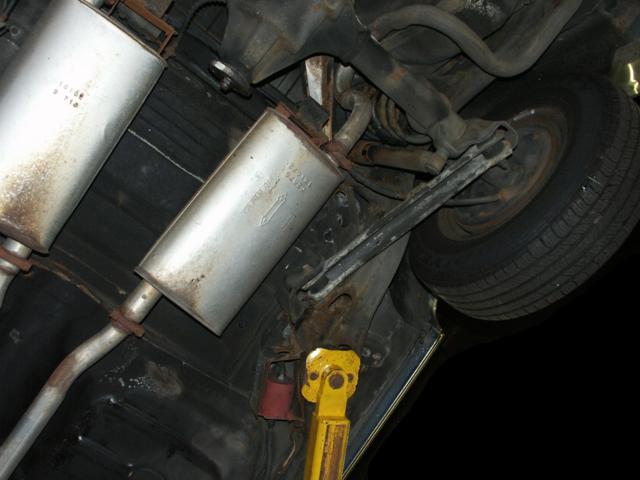
Here's the other side of the car. Also visible in the picture is some
of the emergency brake cabling and the muffler mounts. Also notice no
rear swaybar in the car. And if the vehicle did have a swaybar, there
are no holes cut into the frame to mount the links to. In the pre-1992
cars, the swaybar would be mounted to the two lower control arms.
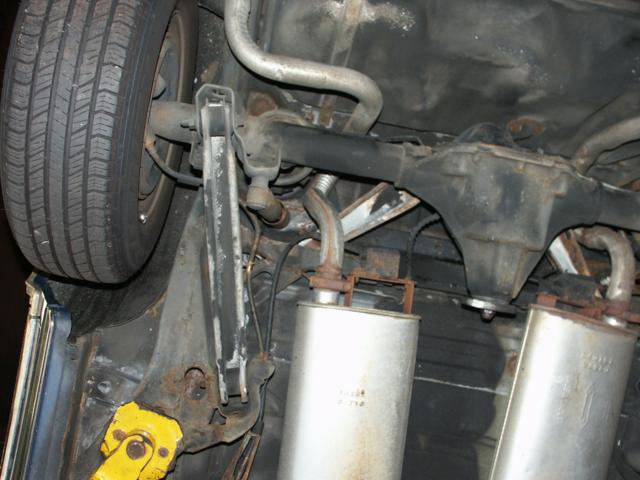
The gasktank in the earlier cars seems a little further away from the
rear axle than in later cars.
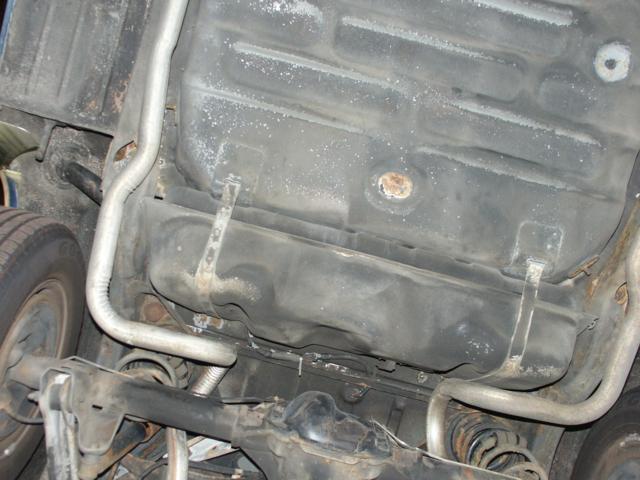
Being a station wagon, this car has true dual exhaust
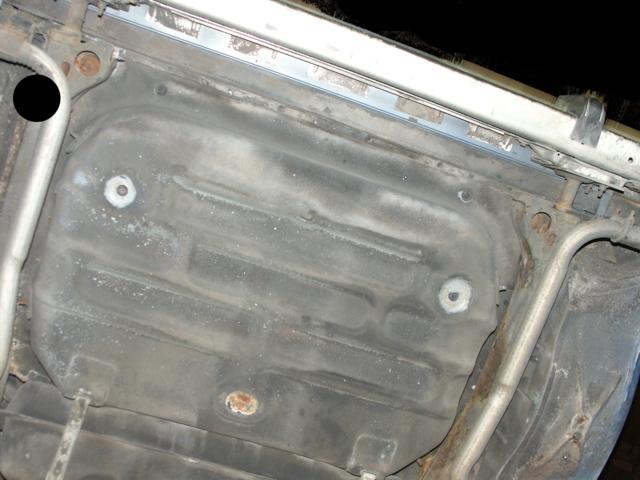
The solid metal rear chrome bumper doesn't have any cutouts in it for
the exhaust pipes. Instead of exiting under the bumper, the pipes make
a 90 degree turn and exit just in front of the bumper.

Chrom plated metal bumpers have fallen out of favor with manufacturers
for some reason
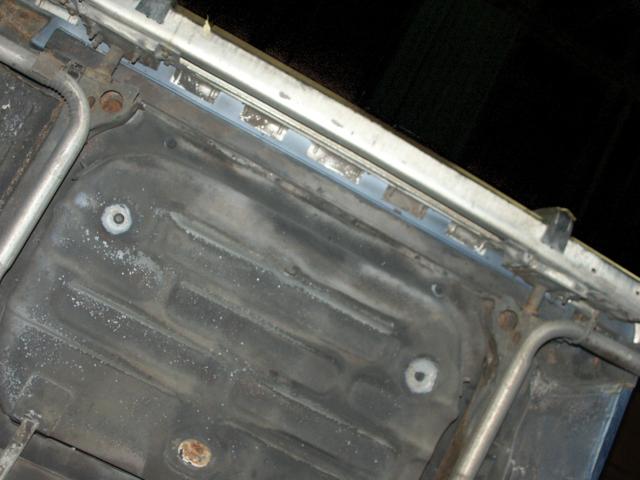
The pre-1992 cars use rear drum brakes. You won't find disc brakes in
the rear of this car.
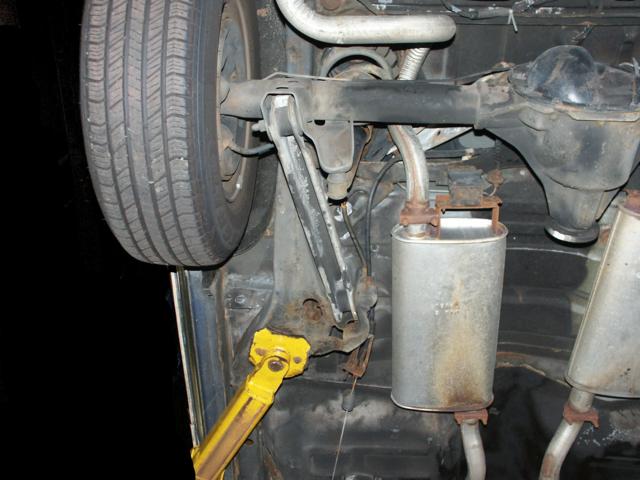
Those big black metal weights hanging off the exhaust pipes are dampers
that supposedly limit objectionably NVH.
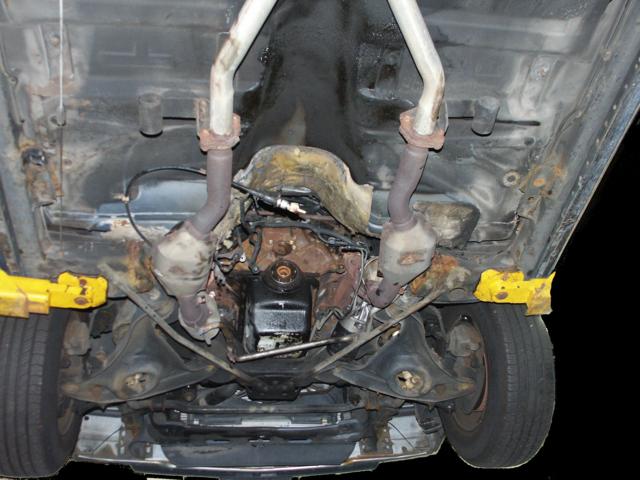
Here's the e-brake cable equalizer
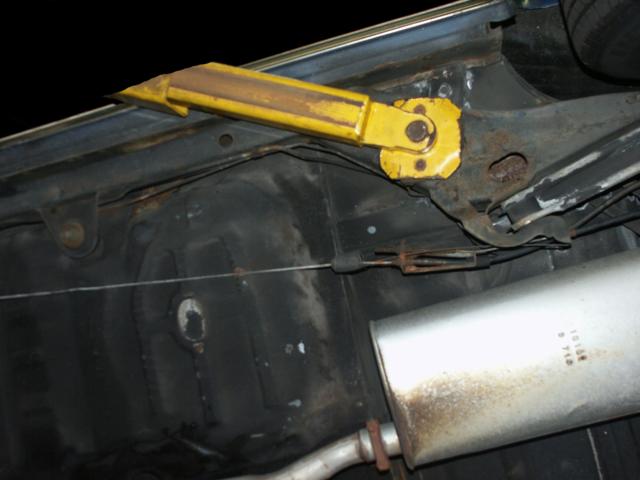
The cables are a little beat up with cracks in the protective jacket
though
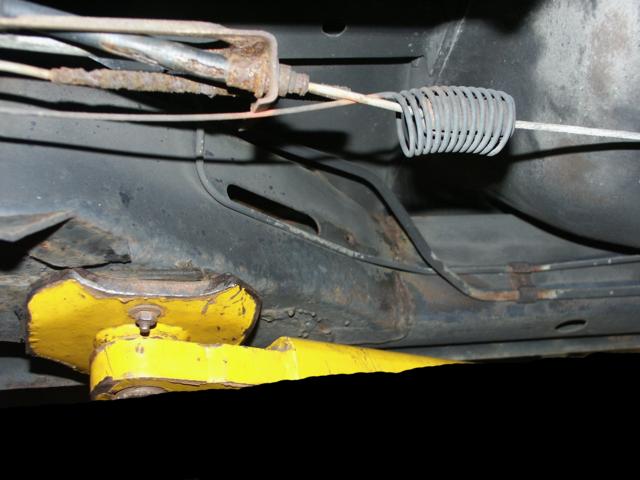
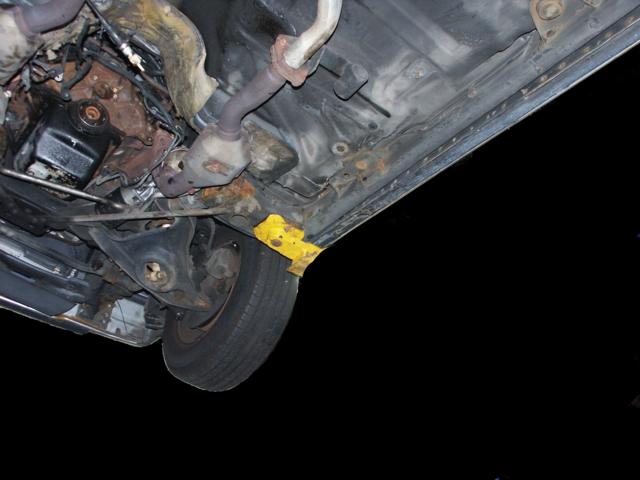
That thick black cable with the white gear on the end is for the
speedometer. The speedometer in the pre-1990 cars was driven by a
mechanical cable. But an electrical vehicle speed sensor was present
for the cruise control and engine fuel management system.
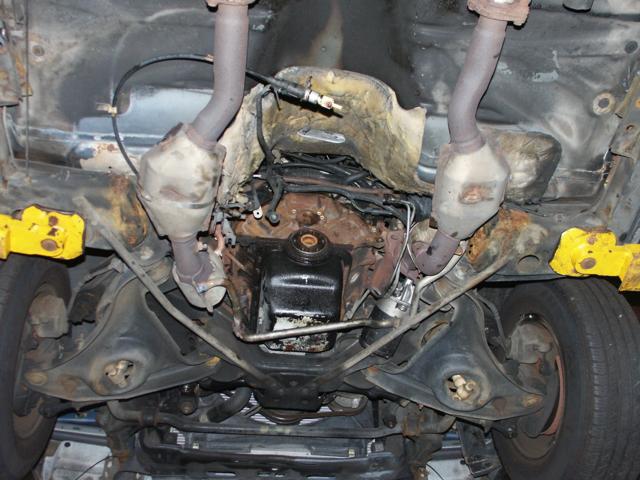
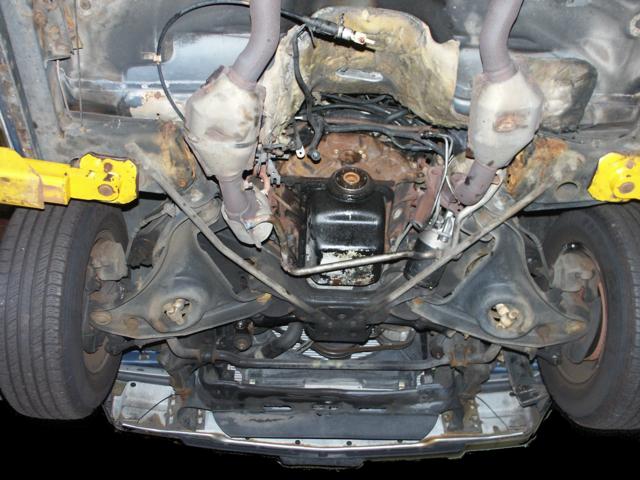
Here's the oddball oil pan with two drain plugs again.
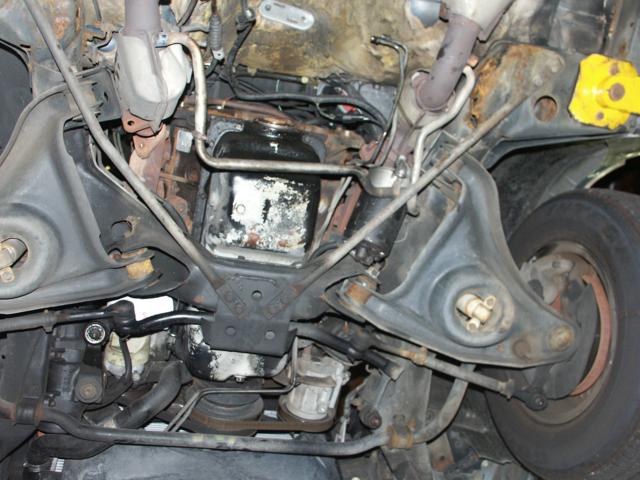
Here's the bottom of the control arm showing how the swaybar link
passes through. On the later 1992-2002 crownvics, the hole for the
swaybar link is still cast into control arm but it's left empty and
unused. Also visible in the picture is the steering gear box and the
tierods and short adjusting sleeves.
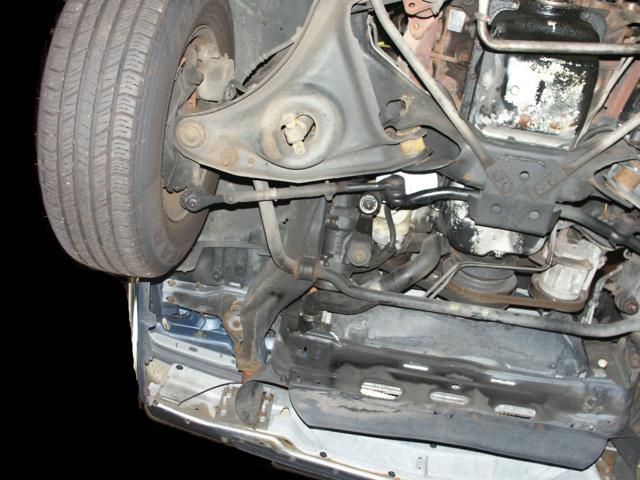
Here's the engine block around where the starter connects. Also visible
in the picture is one of the engine mounts.
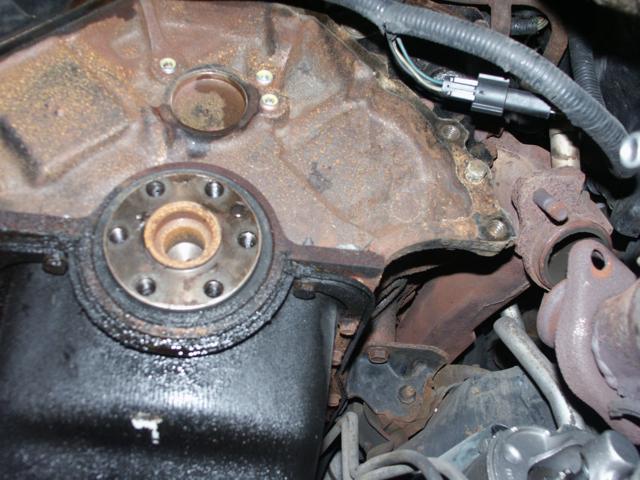
A closeup of one of the exhaust dampers
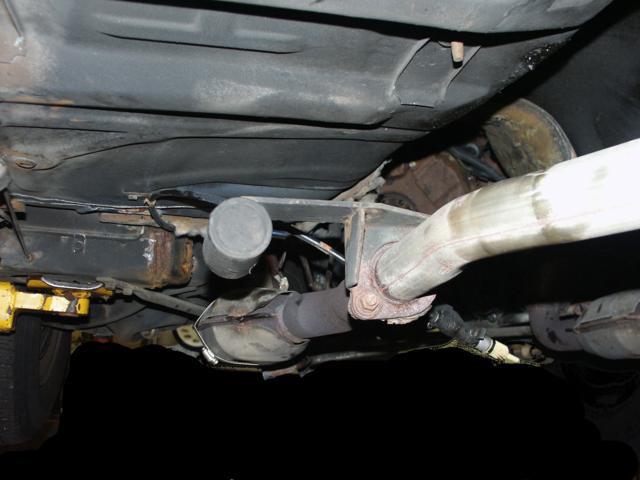
Where the transmission rear crossmember would normally connect to the
frame
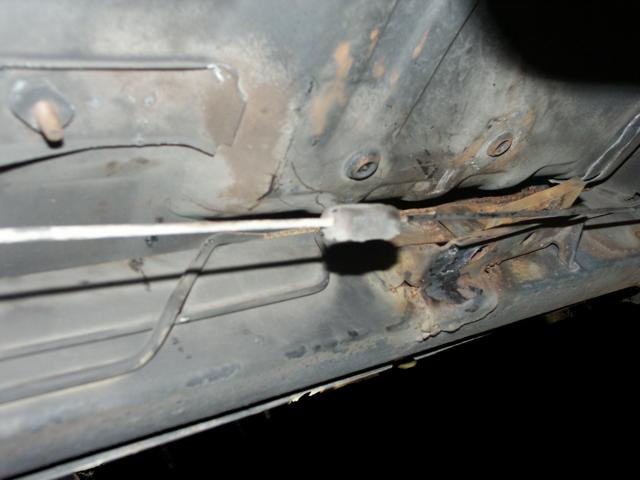
Here's the rear axle brake holes. In the pre-1992 cars, one big brake
pipe ran to the rear of the car which then connected to this hose. The
other end of the hose fed two smaller diameter brake pipes which
connected directly to the drum brake wheel cylinders.
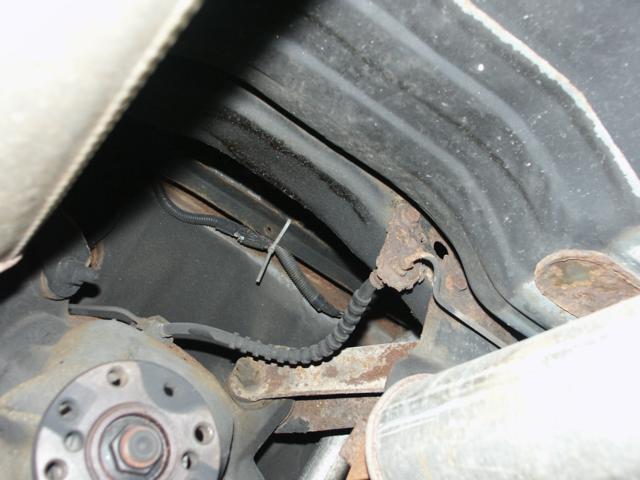
The thick brake line under the driver's floor

A closeup of the bracketry that the lower control arm and shock
absorber connect to on the rear axle
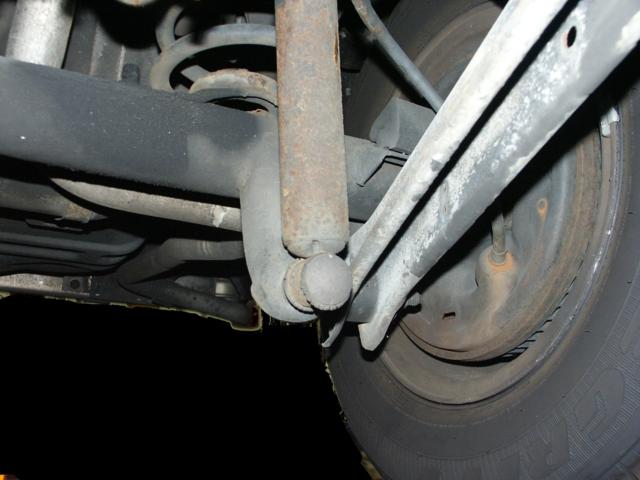
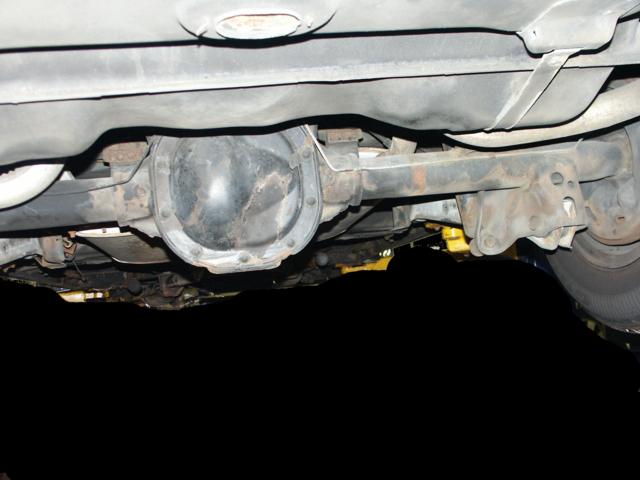
The passengers front suspension from a little different angle

Here's the engine block plate that's nromally wedged in between the
engine and transmission. This is a 5.0L plate that accepts the two bolt
starter

The other side of the block plate
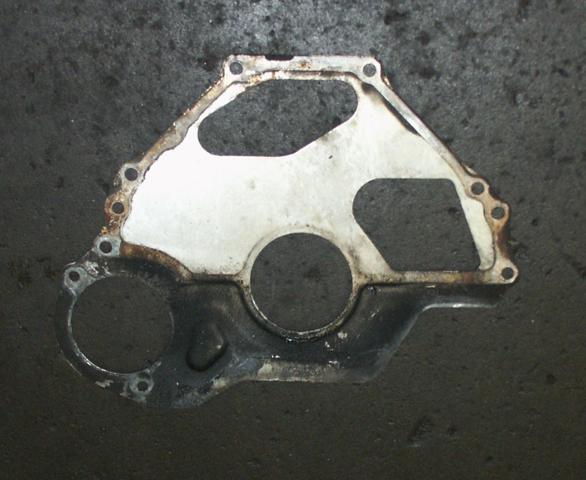
Here's the transmission
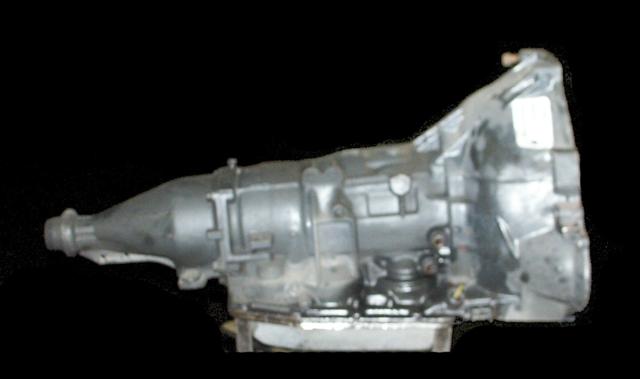
From the front. Note that this bellhousing accepts a "2-bolt" starter
rather than the "3-bolt" setup used in later crownvics.
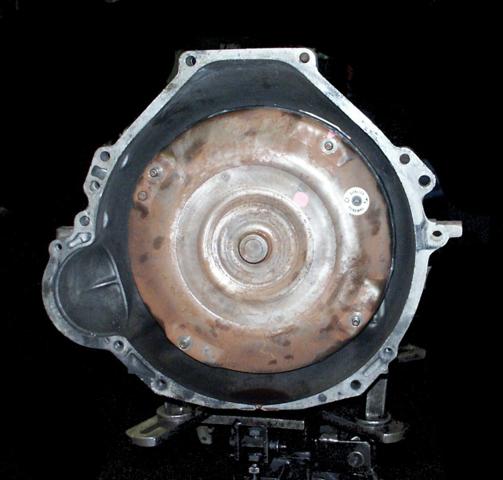
Here' the transmission from the other side. The linkage might look a
little odd here. This is a two part linkage, one part connects to the
transmission gear selector rod, the other part to the tv cable.
The later 1993+ crownvics don't have the two part linkage because they
use an electrical solenoid to control main line pressure instead of
this troublesome tv cable setup. In the 1993+ cars, you don't have to
worry about burning up a transmission because your tv cable bushing
broke. The later cars default to maximum line pressure if they have any
electrical problems with the circuitry leading to the epc solenoid. The
early pre-1992 crownvics with the AOD transmission default to minimum
line pressure if the tv cable setup fails which can burn up your
transmission just driving less than a mile "around the block".
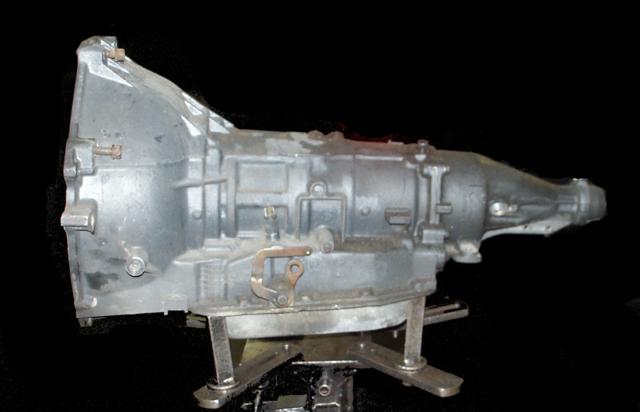
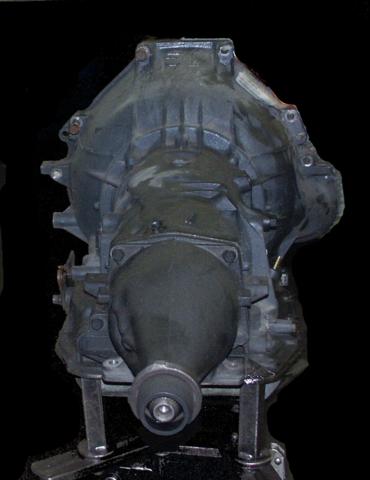
In the pre-1990 crownvics, the gear selector lever on the steering
column was linked to the transmission using a mechanical rod. In the
1990+ cars a flexible cable is used instead.
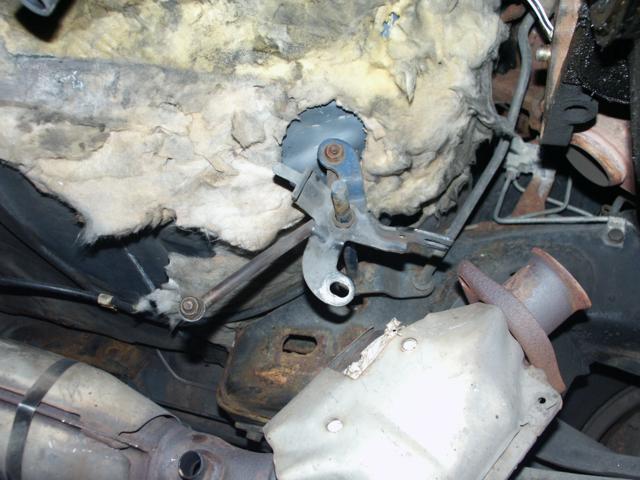
Here's the vehicle speed sensor setup again
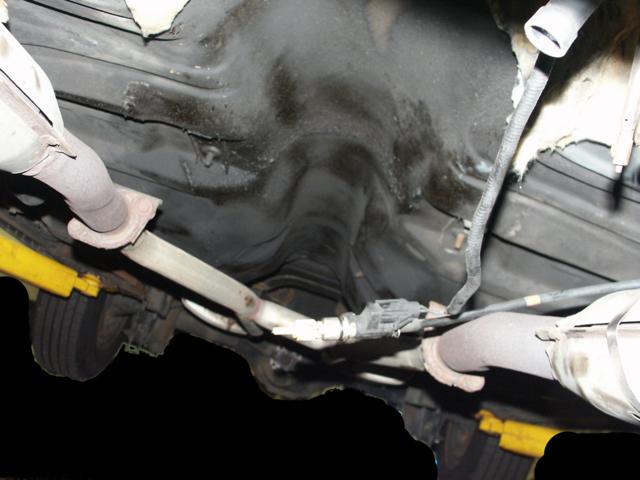
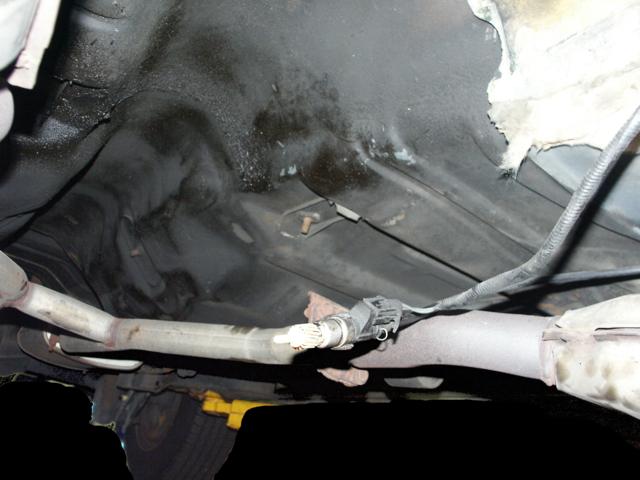
And here's the fuel filler neck that connects the hole that you insert
the gaspump nozzle into to the gastank underneath your crownvic. Also
visible in the picture is the rubber hose that drains water out from
around the filler neck.
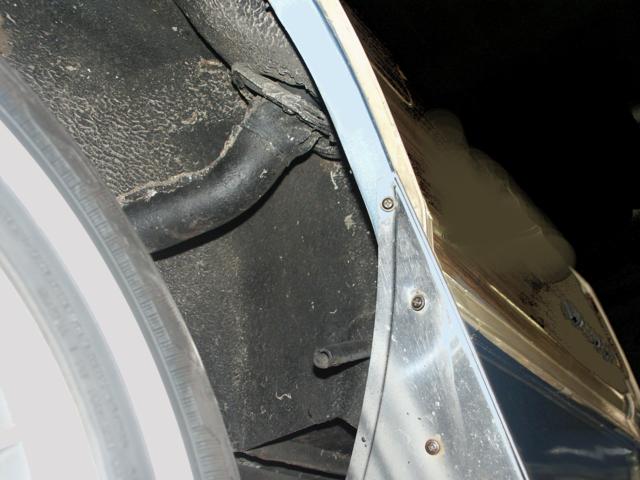
Here's the transmission crossmember


And the driveshaft






















































